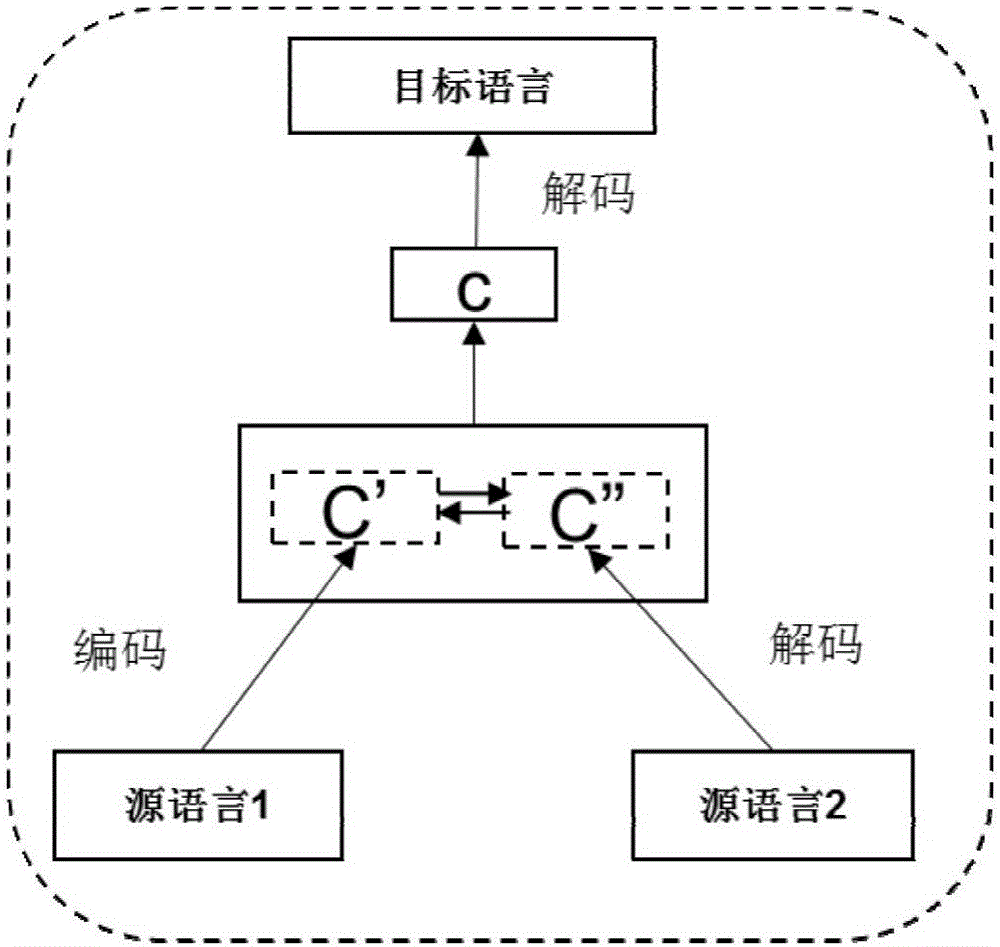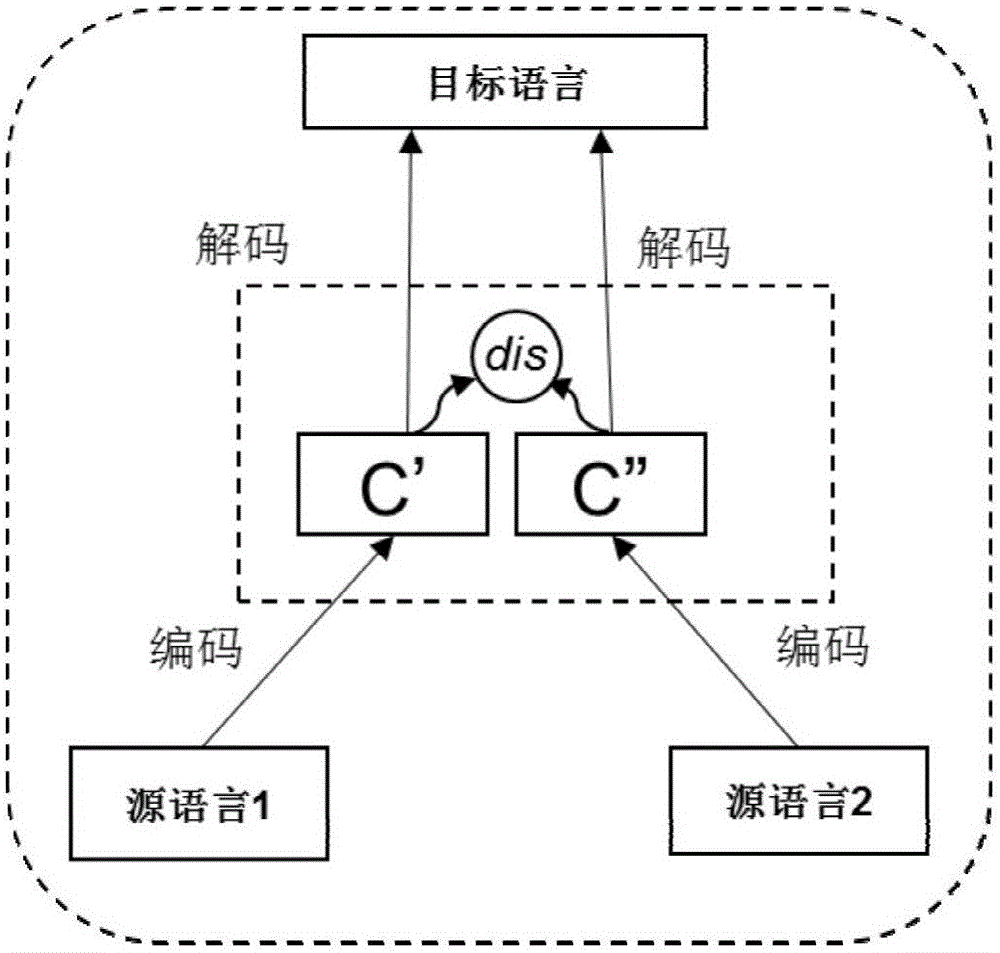Machine translation method for semantic vector based on multilingual parallel corpus
A parallel corpus, machine translation technology, applied in the field of machine translation of semantic vectors, can solve problems such as the curse of dimensionality and the inability to measure the relationship between two words
- Summary
- Abstract
- Description
- Claims
- Application Information
AI Technical Summary
Problems solved by technology
Method used
Image
Examples
specific Embodiment approach 1
[0047] Specific Embodiment 1: The machine translation method based on the semantic vector of multilingual parallel corpus in this embodiment is specifically prepared according to the following steps:
[0048] Step 1. Since the whole process is actually a two-way vector implicit splicing process, it is called a vector-based implicit splicing model; figure 1 The process of the model is depicted; we can see from the figure that the translation system from source language 1 to the target language and the translation system from source language 2 to the target language are not completely independent, and the parameters are not independent; during the training process, the input parallel The source language 1, the source language 2 and the standard target language; wherein, the standard target language is the target language corresponding to the parallel source language 1 and the target language corresponding to the source language 2;
[0049] During the training process, the source...
specific Embodiment approach 2
[0076] Specific embodiment two: the difference between this embodiment and specific embodiment one is: calculate h' in step two i The specific process is as follows: when the encoding part is building a recurrent neural network (Recurrent Neural Network, RNN), random initialization Calculated using formula (5)
[0077] h → i ′ = σ ( W h → ′ x ′ ) x j ′ + W h → ′ h → ′ ...
specific Embodiment approach 3
[0098] Specific embodiment three: the difference between this embodiment and specific embodiment one or two is: in step two, calculate h″ i Specific process:
[0099] In the encoding part, when reversely establishing a Recurrent Neural Network (RNN), it is first randomly initialized Initialize using formula (2) Calculated by formula (6)
[0100] h → 0 ′ ′ = σ ( W h → ′ ′ x ′ ′ ) x 0 ′ ′ + W h ...
PUM
 Login to View More
Login to View More Abstract
Description
Claims
Application Information
 Login to View More
Login to View More - R&D
- Intellectual Property
- Life Sciences
- Materials
- Tech Scout
- Unparalleled Data Quality
- Higher Quality Content
- 60% Fewer Hallucinations
Browse by: Latest US Patents, China's latest patents, Technical Efficacy Thesaurus, Application Domain, Technology Topic, Popular Technical Reports.
© 2025 PatSnap. All rights reserved.Legal|Privacy policy|Modern Slavery Act Transparency Statement|Sitemap|About US| Contact US: help@patsnap.com



